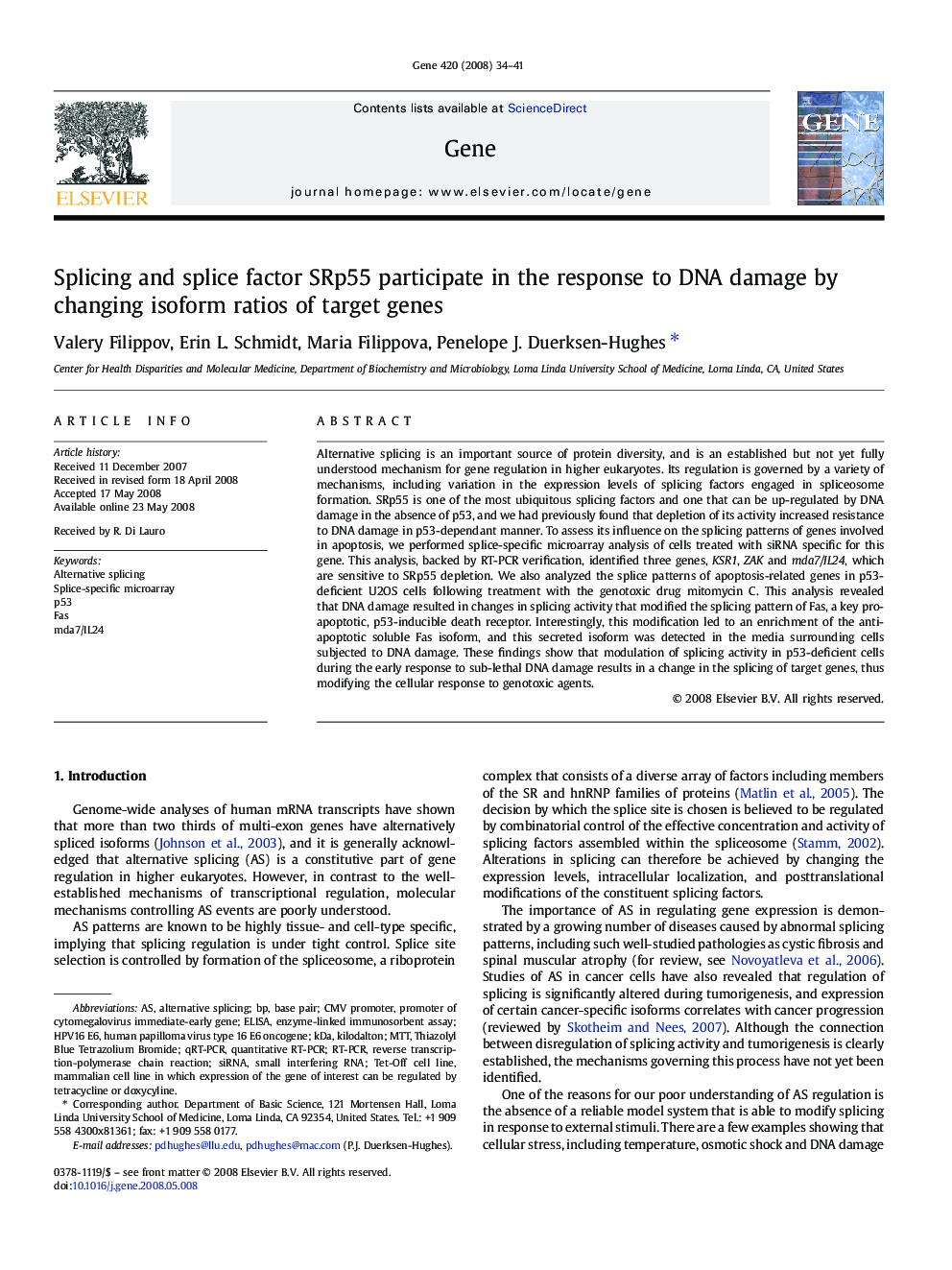| کد مقاله | کد نشریه | سال انتشار | مقاله انگلیسی | نسخه تمام متن |
|---|---|---|---|---|
| 2819274 | 1160123 | 2008 | 8 صفحه PDF | دانلود رایگان |

Alternative splicing is an important source of protein diversity, and is an established but not yet fully understood mechanism for gene regulation in higher eukaryotes. Its regulation is governed by a variety of mechanisms, including variation in the expression levels of splicing factors engaged in spliceosome formation. SRp55 is one of the most ubiquitous splicing factors and one that can be up-regulated by DNA damage in the absence of p53, and we had previously found that depletion of its activity increased resistance to DNA damage in p53-dependant manner. To assess its influence on the splicing patterns of genes involved in apoptosis, we performed splice-specific microarray analysis of cells treated with siRNA specific for this gene. This analysis, backed by RT-PCR verification, identified three genes, KSR1, ZAK and mda7/IL24, which are sensitive to SRp55 depletion. We also analyzed the splice patterns of apoptosis-related genes in p53-deficient U2OS cells following treatment with the genotoxic drug mitomycin C. This analysis revealed that DNA damage resulted in changes in splicing activity that modified the splicing pattern of Fas, a key pro-apoptotic, p53-inducible death receptor. Interestingly, this modification led to an enrichment of the anti-apoptotic soluble Fas isoform, and this secreted isoform was detected in the media surrounding cells subjected to DNA damage. These findings show that modulation of splicing activity in p53-deficient cells during the early response to sub-lethal DNA damage results in a change in the splicing of target genes, thus modifying the cellular response to genotoxic agents.
Journal: Gene - Volume 420, Issue 1, 15 August 2008, Pages 34–41